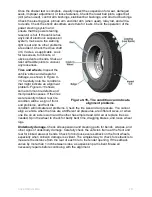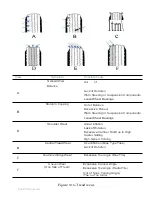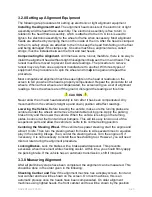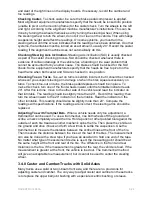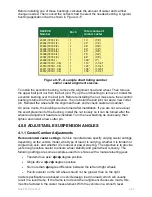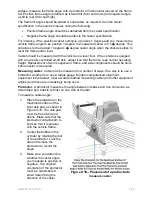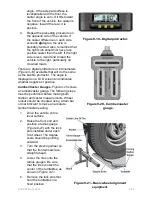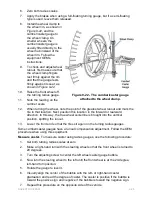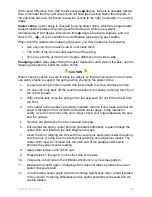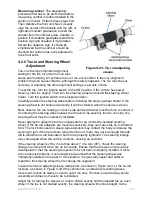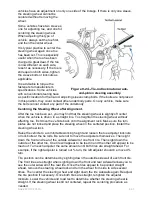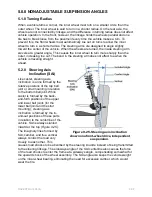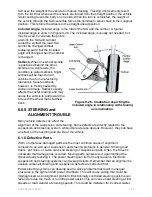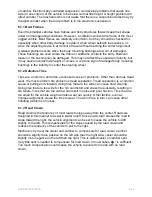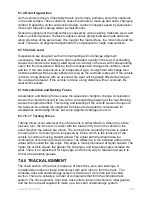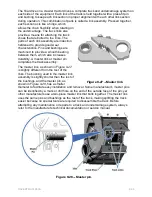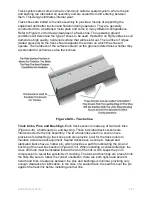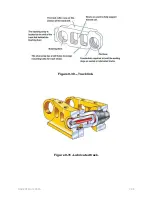
6.1.4 Road Irregularities
As the vehicle is driven, it inevitably travels over bumps, potholes, and other variations
in the road surface. These variations cause the wheels to move up and down, changing
camber. Depending on the suspension design, camber changes caused by suspension
movement may also change caster a small amount.
General roughness of the road surface is caused by various paving materials, wear, and
built-in, anti-skid grooves. Surface roughness varies greatly between roads and even
along stretches of the same road. The rougher the road surface, the more noise and tire
wear. There are no alignment adjustments to compensate for rough road surfaces.
6.1.5 Vehicle Load
Suspensions are designed so that normal loading will not change alignment
excessively. However, vehicles are often overloaded, usually in the rear. Overloading
causes the vehicle to be lower (called squat or sit down) in the rear, with corresponding
rise in the front suspension. Raising the front suspension changes the camber, caster,
and toe. If the rear suspension is an independent type, its alignment will change also.
Vehicle handling will be greatly affected as long as the overload is present. If the vehicle
is driven a long distance with an overload, tire wear will be greatly affected as long as
the overload is present. If the vehicle is driven a long distance with an overload, tire
wear will be severe.
6.1.6 Acceleration and Braking Forces
Acceleration and braking forces cause the suspension height to change. Acceleration
causes the vehicle front end to rise, with a corresponding lowering of the rear. Braking
causes the opposite effect. This raising and lowering of the vehicle causes changes to
the suspension, altering the alignment. Vehicles are designed to compensate for
acceleration and braking forces, but some alignment changes do occur.
6.1.7 6.1.7 Turning Forces
Turning forces occur whenever the vehicle turns in either direction. When the vehicle
makes a turn, the tires are in contact with the road and try to turn the vehicle in the
exact direction the wheels are aimed. The turning force created by the tires is called
cornering force. Cornering force is opposed by inertia, which is the tendency of the
vehicle to continue moving straight ahead. The actual path the wheels take is a
combination of cornering force and inertia. The difference in the intended path and the
actual path is called the slip angle. Slip angle is more pronounced at higher speeds. The
higher the vehicle speed, the greater the slip angle, and large slip angles increase tire
wear. There is no adjustment for slip angle, and the only way to reduce tire wear is to
corner at reasonable speeds.
7.0.0 TRACK ALIGNMENT
The chain section of the track is made up of track links, pins, and bushings. A
considerable number of these interconnect with each other to form the track. The
complete track and undercarriage system is made up of more than just the chain
section. There are actually a number of components that form the complete track
system. The drive sprocket, front idler, track rollers, tension mechanism, roller guards,
and the frame are all required to make up a track and undercarriage system.
NAVEDTRA 14050A
9-35

